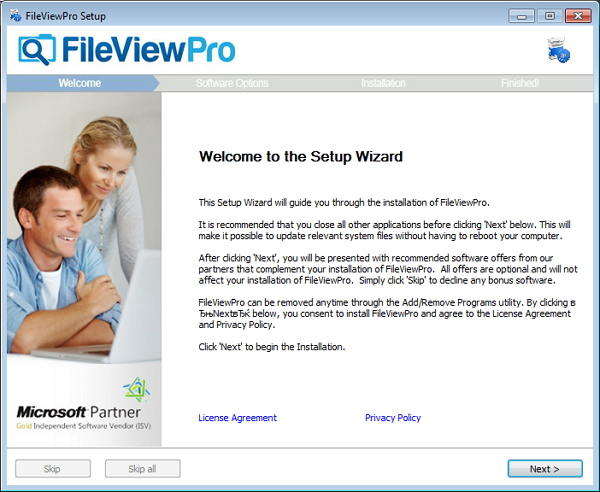A .ZAP file is most often an application-specific compressed file used to bundle data or entire projects in a compact form. For legacy compression utilities, .ZAP functions as their native compressed archive, storing data in a way only those tools fully understand. On the automation side, TIA Portal uses .ZAP as an archive format, allowing engineers to save full project snapshots into a single compressed file for transfer or restoration. Windows administrators encounter .ZAP again in text-based program description files for Group Policy, and security tools like ZoneAlarm keep certain data in .ZAP format, which means the extension covers both compressed and non-compressed, configuration-style content. What these scenarios share is that .ZAP is not a generic document you can safely open in any editor, but a binary or structured container that must be interpreted by its parent application or a compatible viewer. For everyday users, a multi-format tool like FileViewPro helps by recognizing the .ZAP extension, probing whether the file behaves like a compressed disk image, a FileWrangler archive, a TIA Portal project backup, or a Windows/ZoneAlarm data file, and—where supported—letting you preview, inspect, or extract the contents without guessing which application to try first
A compressed file is compact file packages that reduce the size of the information they hold while keeping it organized and easy to handle. At their core, they work by analyzing patterns and redundancy in data and then representing that information in a more efficient way. Because of this, the same drive can hold more information and uploads and downloads finish sooner. Whether it is one spreadsheet or a full collection of mixed files and subfolders, everything can be bundled into a single compressed package, condensed into one archive that takes up less space than the separate files would. This flexibility explains why compressed files show up in so many places, including installers, system backups, shared folders, and large media collections.
Compressed archives only became practical after key breakthroughs in compression theory and widespread adoption of home and office PCs. During the 1970s–1980s, pioneers like Abraham Lempel and Jacob Ziv developed famous schemes like LZ77 and LZ78, proving that you could spot repetition in a data stream, store it in a shorter form, and still rebuild every bit exactly. From those early designs came mainstream techniques such as LZW and DEFLATE, now built into a wide range of common archive types. In the late 1980s and early 1990s, developers like Phil Katz helped bring file compression to everyday users with tools such as PKZIP, effectively standardizing ZIP archives as a convenient way to package and compress data. Since then, many alternative archive types have appeared, each offering its own balance of speed, compression strength, and security features, yet all of them still revolve around the same core principle of compact packaging.
Under the hood, archives use compression schemes that are typically categorized as either lossless or lossy. With lossless compression, nothing is permanently thrown away, so it is safe for any information where accuracy matters. Common archive types like ZIP and 7z are built around lossless algorithms so that unpacking the archive gives you an exact duplicate of the source files. In contrast, lossy compression removes data that algorithms judge to be less noticeable to human eyes or ears, which is why it is widely used in streaming media. Whether it is a generic archive or a specialized media format, the underlying goal remains to squeeze out wasted space while keeping the content useful. Beyond just smaller size, archives also act as containers that protect folder structures and metadata in one place.
As computers and networks have become faster and more capable, the advanced uses of compressed files have expanded far beyond simple disk savings. Today, many programs reach end users as compressed archives that are extracted during installation. Large content libraries are typically stored in compressed archives so that they occupy less disk space and can be patched or replaced without touching the rest of the installation. In system administration and DevOps, compressed archives are indispensable for log rotation, backups, and automated deployment workflows. Distributed systems and cloud platforms continuously compress data behind the scenes, helping keep performance high and bills under control.
Another important dimension of compressed files is their role in archiving, long-term storage, and security. By shrinking data, they make it feasible to store large email archives, research collections, project histories, and media libraries on external drives, tape systems, or cloud backup services. A number of archive types support built-in checksums and recovery records that help detect errors and, in some cases, repair damaged data. In addition, many archive tools allow users to encrypt their compressed files, turning them into compact, password-protected containers. The result is that a single compressed file can act as both a vault and a space-saver for important content.
On the practical side, compressed files remove a lot of friction from sharing and organizing information. If you loved this post and you would certainly such as to obtain additional details regarding ZAP file extraction kindly check out our own web site. Instead of sending dozens of separate attachments, you can place them in a folder, compress it, and share a single smaller archive that is faster to upload and download. Because the layout is kept inside the archive, everyone sees the same structure after extraction. Backup tools frequently use compressed archives so they can capture snapshots of entire folders or systems efficiently. As a result, knowing how to deal with compressed files is now as fundamental as understanding how to copy and paste or move files between folders.
With numerous formats in the wild, it is common for users to run into archives they have never seen before and are not sure how to open. Instead of guessing which program to use, you can rely on FileViewPro to identify and open the archive for you. By centralizing the process into one application, FileViewPro makes it easier to browse archive contents, preview files, and choose exactly which items to restore. For anyone who regularly downloads software, works with shared projects, or receives large bundles of documents, having a dependable way to open and manage compressed files through FileViewPro turns compression technology into something practical, convenient, and easy to trust.
Looking ahead, compressed files will continue to adapt as storage devices, networks, and user expectations evolve. Researchers and developers are constantly working on algorithms that deliver stronger compression with lower processing overhead, which is crucial for streaming, gaming, and large-scale cloud workloads. Despite all the innovation, the core goal has not changed; it is still about making big things smaller and more manageable. From personal use to professional environments, compressed archives quietly support tasks that would otherwise be slow, awkward, or expensive. By pairing advanced compression formats with an accessible viewer like FileViewPro, the benefits of smaller, smarter files become available to every user, not just technical experts.





